May 13th. 2012.
We woke up to an other rainy cold day . Had home made
breakfast again and packed up. We left our favorite hotel and headed toward
Hallstatt.
Hallstatt is a beautiful town in between the amazing
alpine mountains next to a sweet little glacierlake. Most of us thought that it
could be a perfect retirement place.
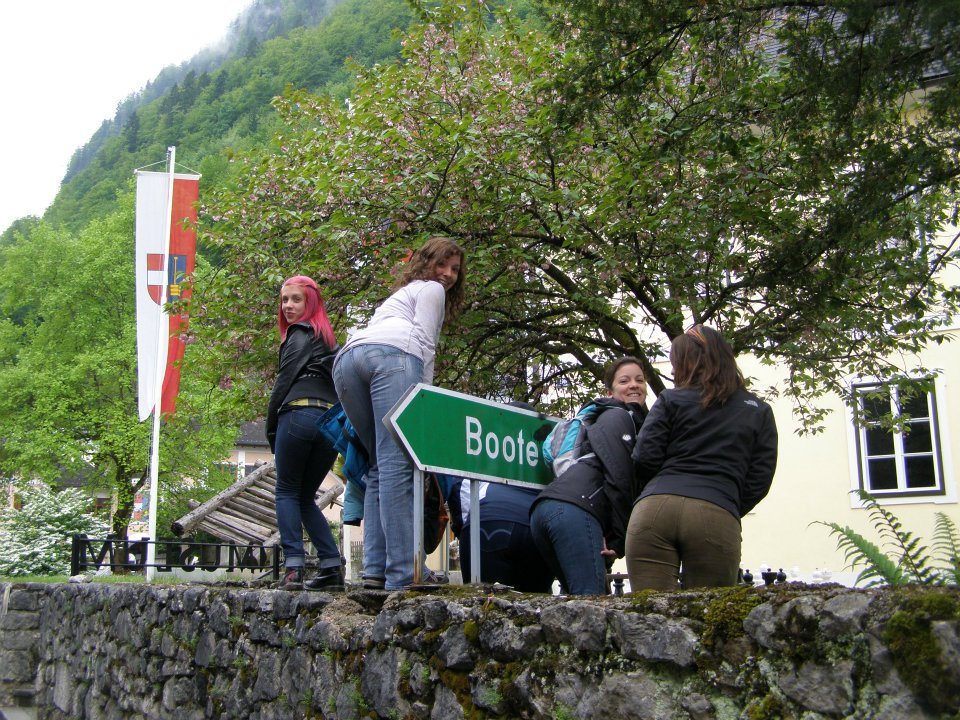
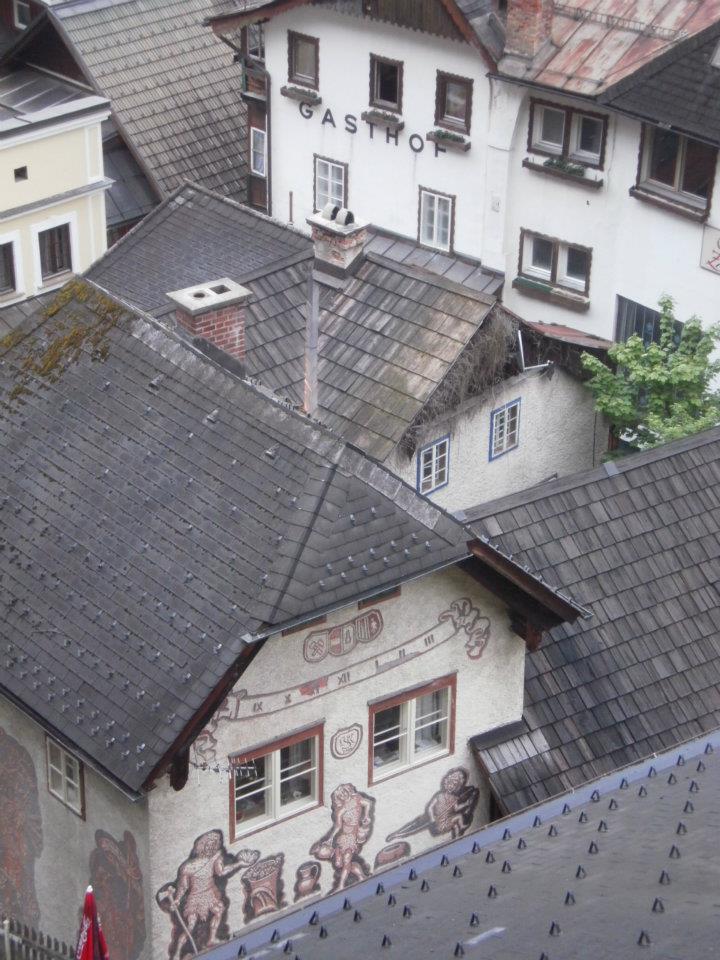
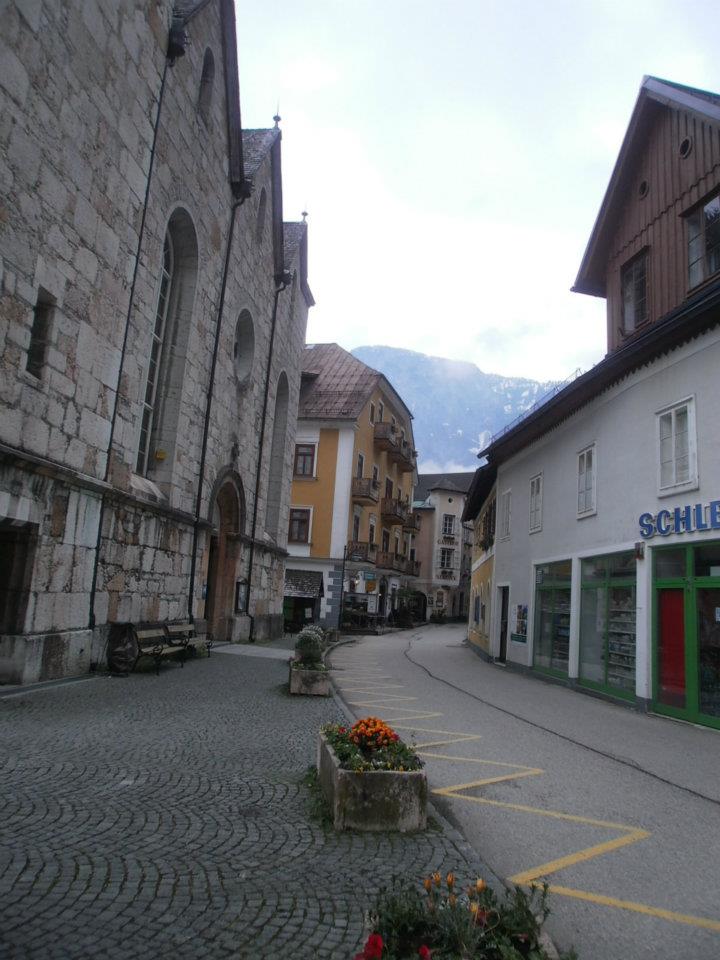
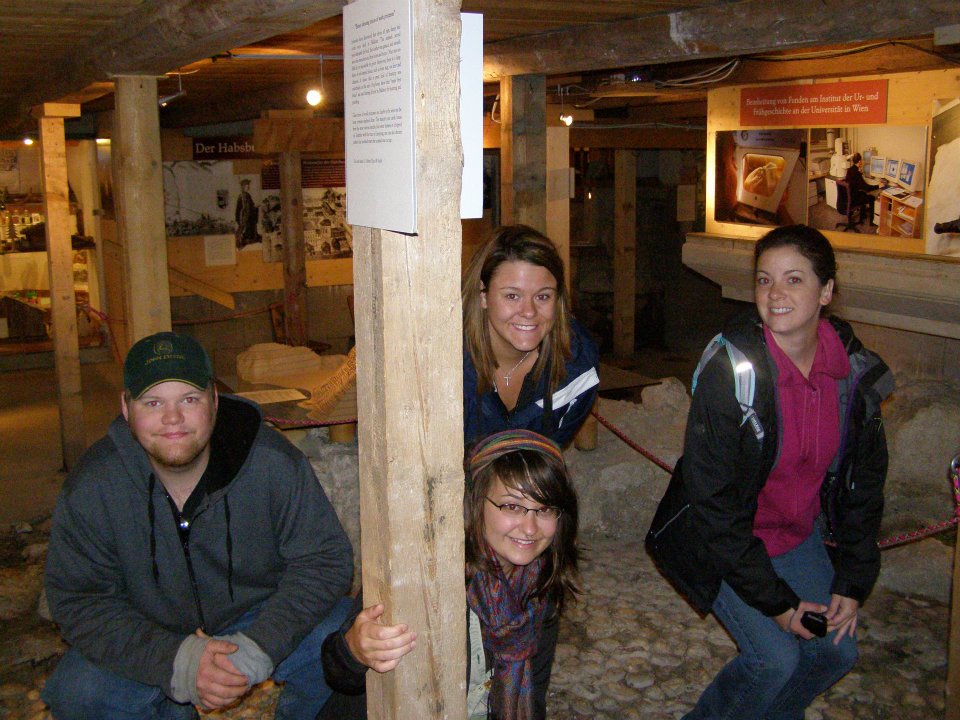
"Hallstatt is a tiny village clinging to a minuscule
patch of Earth between the beautiful alpine peaks and a lake, whose image
graces many travel poster and guidebook cover. Easily one of the most
photogenic spots in all of Europe, Hallstatt is also one of the oldest
settlements in this part of the Continent.
Hall
is an ancient Celtic word for salt. The early Celts were mining the white gold
here as far back as 1000 BC, long before they migrated west to France and
Britain. The late Bronze and early Iron ages (900-500 BC) are in fact known as
the Hallstatt Era after the advanced civilization that once flourished here.
Numerous artifacts from that epoch have been unearthed and are displayed in the
local museum.
With all it has to offer, Hallstatt has become
a very popular weekend destination among the Austrians themselves.
This Hallstatt-Dachstein Salzkammergut area has been
added to the UNESCO World Heritage List with the following inscription: "Human
activity in the magnificent natural landscape of the Salzkammergut began in
prehistoric times, with the salt deposits being exploited as early as the 2nd
millennium BC.
Considered by some to
be one of the most beautiful places on earth, Hallstatt is sometimes called "the
pearl of Austria". "
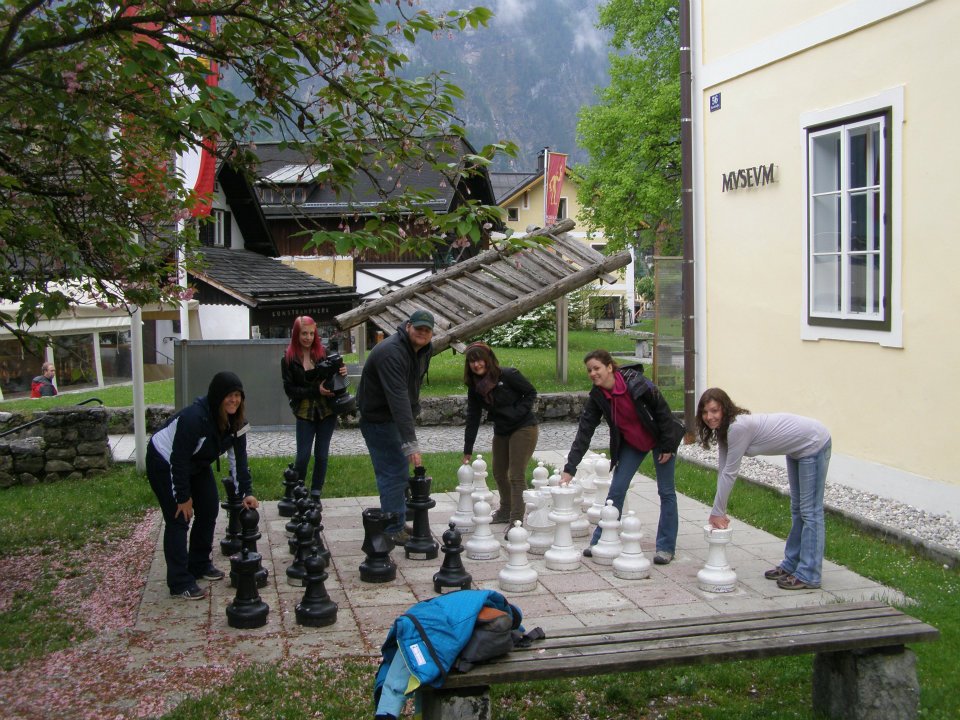

We were pretty sad to live Hallstatt, but we had to get to the highest peak
of Austria, the Grossglockner.
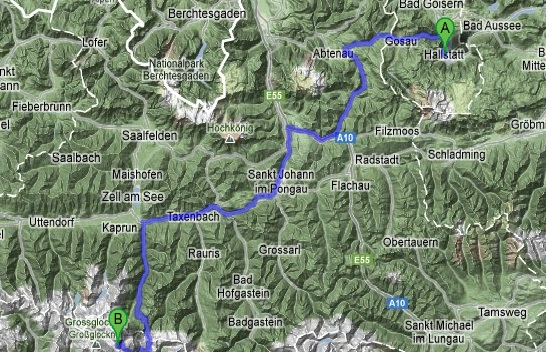

"At 3,798m the Grossglockner is not only the highest mountain in
Austria, it also counts among the highest peaks in the Alps.The
mountains have always been considered dangerous by people. Difficult
weather conditions and the lack of surfaced trails made a crossing
unthinkable. Nevertheless, there are ancient traces that prove the
daring spirit of the people. Such finds as pre-Celtic bronze knives,
Celtic gold jewellery, a Roman Hercules statue, medieval pack-animal
bridles and the chains of galley slaves from the 17th century are
witness to the crossing of the Hochkar almost 4,000 years ago. Until the
highpoint of trade in the 17th century, after the Brenner and the
Radstadt Tauern, the Hochtor was the third most important trade route
carrying almost ten per cent of the trade goods over the eastern Alps.
However, not only danger was found in the mountains, but also
fascination. The first ascent of Mont Blanc was a tremendous sensation
and also brought forth brave men here at home. But only the second
Glockner expedition in 1800 led to success. Victory and failure also
accompanied other expeditions. The Pallavicini Gully was named after
Margrave Alfred Pallavicini, who died on the Glockner in 1886.
With the building of the Grossglockner High Alpine Road, the majestic
peak acquired a new dimension. As a popular excursion destination it is
the epitome of an impressive natural experience for many people: size
and power can be felt here, one is subject to the fascination of the
eternal ice and the elemental force of nature(http://www.grossglockner.com/grossglockner/)."
As we were driving up on the
"Grossglockner Hochalpenstrasse", we were more and more
astounded by the
beauty of the Alps. The splendid view we have just heard about before.
"The Alps consist
of parts of the European Plate, a former Jurassic to Lower Cretaceous
ocean floor, and the Adria Plate as part of the African Plate. A
complicated pattern of overthrusted nappes characterizes the tectonic
style. As a general rule, tectonically higher nappes originate further
south. If the pile of nappes were hypothetically rolled out, the result
would be 4 main former facial areas—the Helvetic, Penninic, Eastern, and
Southern Alpine
Additionally, there are the autochthonous to
parautochthonous, prealpidic crystalline Helvetic central massifs.
Reconstruction of the tectonic evolution resulted in a compression of
the former ocean (Tethys) in the order of 500–800 km or even more .
During the collision of the African Plate with the European continent,
the western Alps were more heavily compressed than the eastern Alps.
This had several consequences: The eastern Alps have the greatest
diameter, whereas the highest peaks occur in the western Alps. Eastern
Alpine nappes have been almost completely eroded in the western Alps.
Today, the western Alps of Switzerland and France are
mainly characterized by Helvetic and Penninic nappes, which in the
eastern Alps are only visible in the very northern part. The sediments
of the Helvetic nappes were deposited on the European shelf during the
Mesozoic and the Lower Tertiary. Therefore, limestones predominate,
forming many famous peaks in the Alps. In the eastern Alps, Penninic
nappes are extensively covered by Eastern Alpine units. There, Penninic
units appear only occasionally in tectonic windows. The largest of these
is the Tauern Window, which covers an area approximately 30 km × 160 km
Schists and ophiolites (metamorphic remnants of the former oceanic
crust) are typical rocks in the central part of the former Penninic
Ocean. They characterize the suture between the African and European
Plates.
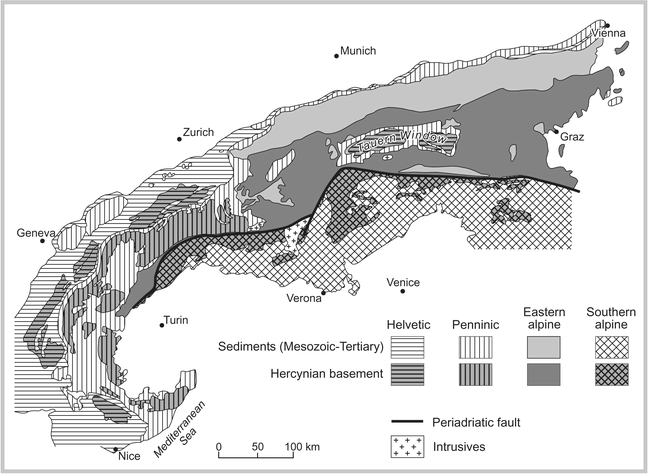
http://www.bioone.org/bioone/?request=get-document&issn=0276-4741&volume=021&issue=04&page=0340
In the Alps today, glaciers cover an area of
about 3000 km2, or ca 2–3% of the surface.
The typical alpine relief, with U-shaped valleys, hanging
valleys, and steep mountain peaks, is a consequence of the
Quaternary glaciations. Glacial erosion is also well
documented by an overdeepening of the valley floors. Solid
rock as the base of the Quaternary fillings is often
situated at or some hundred meters below sea level. This has
important impacts on groundwater flow and tunnel
construction. During the Last Glacial Maximum (LGM), the
ice-covered area of the Alps increased to 126,000 km2.
After 14,000
14C years BP, glaciers started to
melt rapidly. A prominent readvance occurred during the
Younger Dryas period (Egesen stade, 11,000–10,000
14C
years BP), but already in the early Holocene, snowlines and
treelines reached modern altitudes.
 At
the end of the last glaciation (Würm), the oversteepened and
almost vegetation-free slopes led to widespread mass
movements. Besides till and fluvioglacial sediments, the
valleys are therefore characterized by rockfalls and debris
cones. The largest rockfalls occurred in the limestone
areas, such as the Flimser Rockfall in Switzerland, which is
the largest one in the Alps (12 km3;). Up to now,
the Rhine River has cut a 600-m-deep canyon into these
probably late-glacial deposits. In the crystalline areas,
rockfalls are smaller, the largest being the Early Holocene
Köfels Rockfall in Austria (2 km3). Many
rockfalls initiated debris flow and catastrophic floods.
From:(http://www.bioone.org/bioone/?request=get-document&issn=0276-4741&volume=021&issue=04&page=0340#s2)
At
the end of the last glaciation (Würm), the oversteepened and
almost vegetation-free slopes led to widespread mass
movements. Besides till and fluvioglacial sediments, the
valleys are therefore characterized by rockfalls and debris
cones. The largest rockfalls occurred in the limestone
areas, such as the Flimser Rockfall in Switzerland, which is
the largest one in the Alps (12 km3;). Up to now,
the Rhine River has cut a 600-m-deep canyon into these
probably late-glacial deposits. In the crystalline areas,
rockfalls are smaller, the largest being the Early Holocene
Köfels Rockfall in Austria (2 km3). Many
rockfalls initiated debris flow and catastrophic floods.
From:(http://www.bioone.org/bioone/?request=get-document&issn=0276-4741&volume=021&issue=04&page=0340#s2)

Pleistocene glaciation of the Alps,
based on
Glückert (1987)
and
Lister et al (1998).
(Map by Andreas Brodbeck)
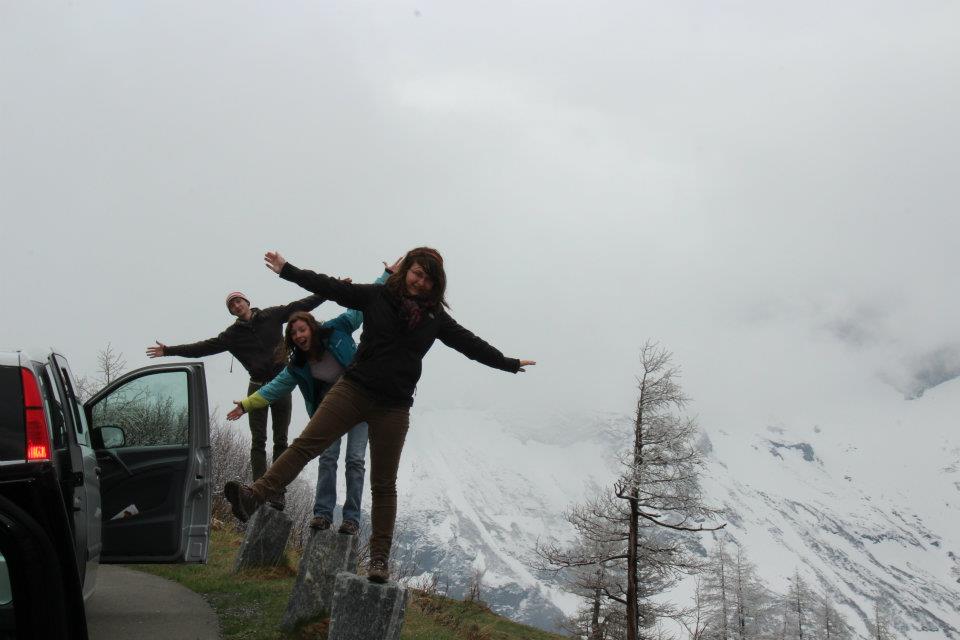
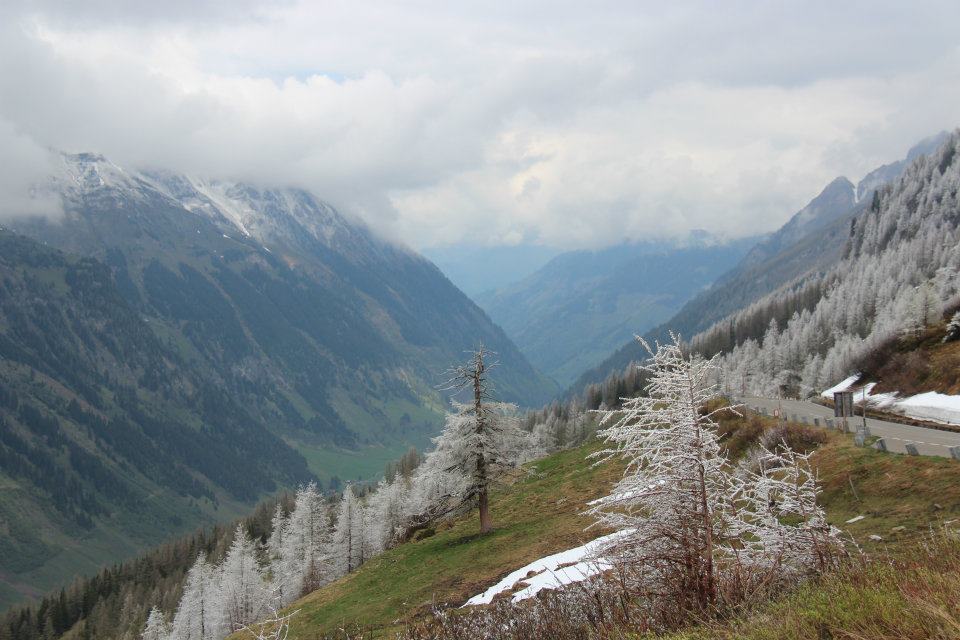
On the road to the glacier
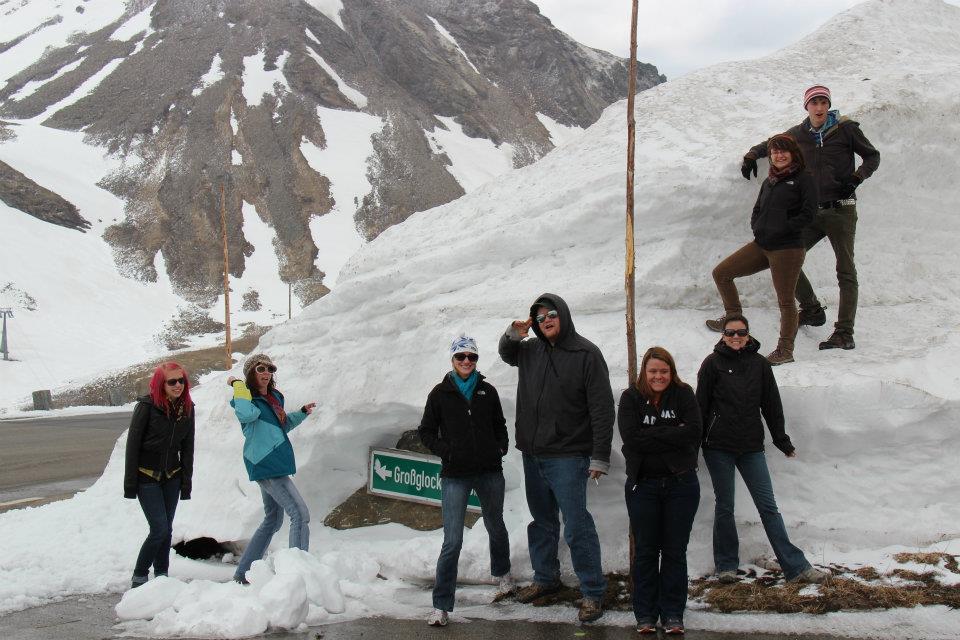



The weather was not very nice to us.
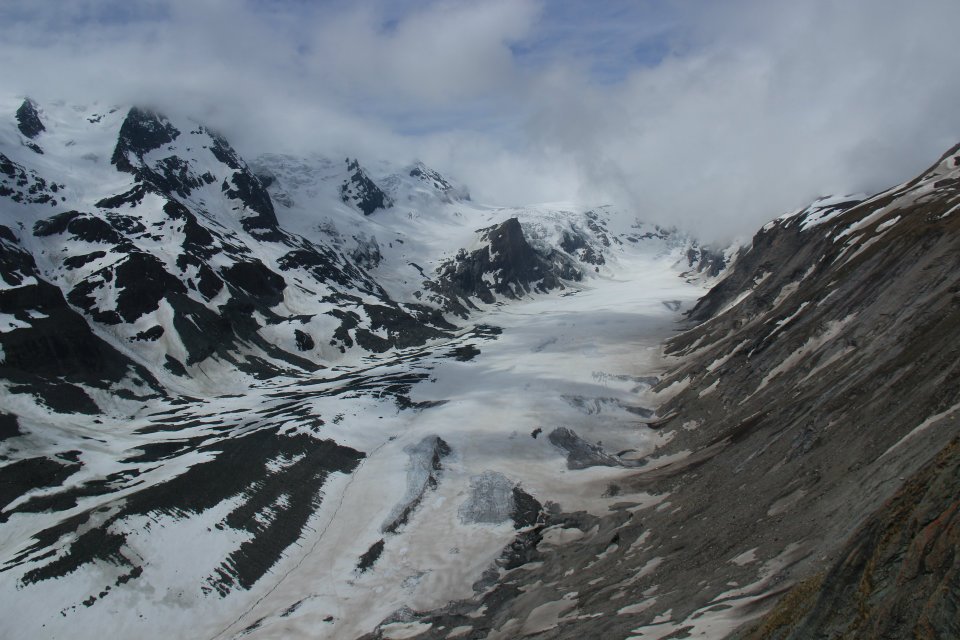
This is the main glacier (Pasterze glacier) of the
Grossglockner.
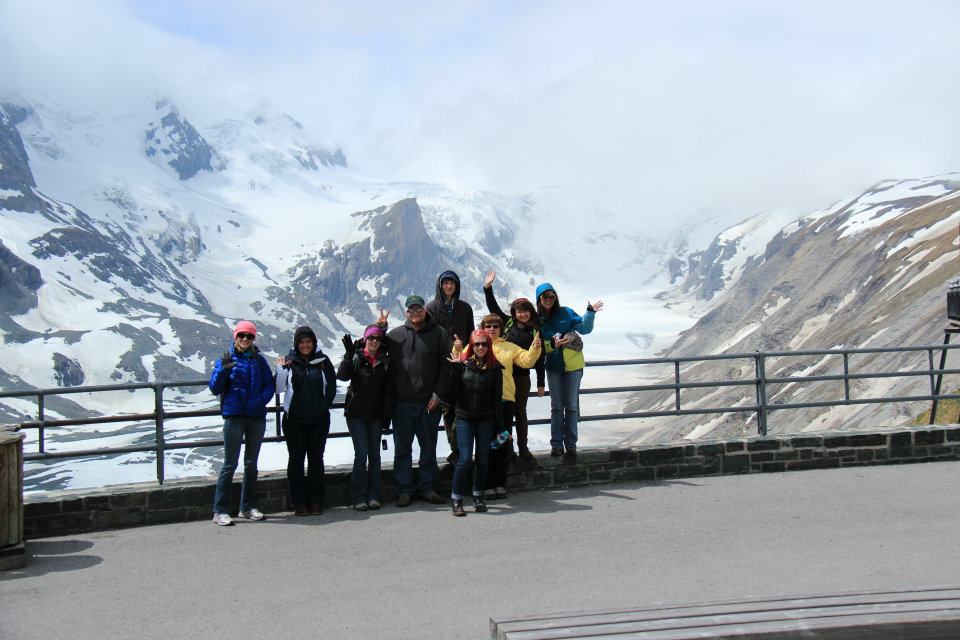
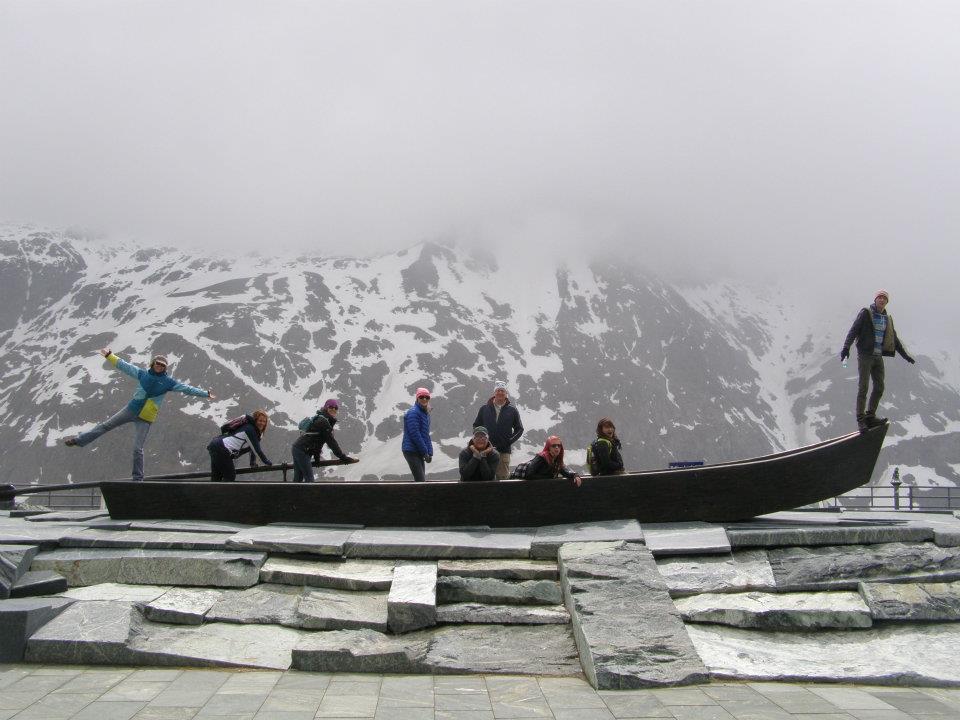
Because of the weather we did not try to go dawn to the
glacier. There was absolutely nobody on the path. After the Werfen experience,
Dr. Anna decided not to go. So we had a leisure lunch at the restaurant, walked
around and got back to the car and started our long drive to Baden-Baden.

We spent the night in the same hotel as the first night.




![]() At
the end of the last glaciation (Würm), the oversteepened and
almost vegetation-free slopes led to widespread mass
movements. Besides till and fluvioglacial sediments, the
valleys are therefore characterized by rockfalls and debris
cones. The largest rockfalls occurred in the limestone
areas, such as the Flimser Rockfall in Switzerland, which is
the largest one in the Alps (12 km3;). Up to now,
the Rhine River has cut a 600-m-deep canyon into these
probably late-glacial deposits. In the crystalline areas,
rockfalls are smaller, the largest being the Early Holocene
Köfels Rockfall in Austria (2 km3). Many
rockfalls initiated debris flow and catastrophic floods.
From:(http://www.bioone.org/bioone/?request=get-document&issn=0276-4741&volume=021&issue=04&page=0340#s2)
At
the end of the last glaciation (Würm), the oversteepened and
almost vegetation-free slopes led to widespread mass
movements. Besides till and fluvioglacial sediments, the
valleys are therefore characterized by rockfalls and debris
cones. The largest rockfalls occurred in the limestone
areas, such as the Flimser Rockfall in Switzerland, which is
the largest one in the Alps (12 km3;). Up to now,
the Rhine River has cut a 600-m-deep canyon into these
probably late-glacial deposits. In the crystalline areas,
rockfalls are smaller, the largest being the Early Holocene
Köfels Rockfall in Austria (2 km3). Many
rockfalls initiated debris flow and catastrophic floods.
From:(http://www.bioone.org/bioone/?request=get-document&issn=0276-4741&volume=021&issue=04&page=0340#s2)

















